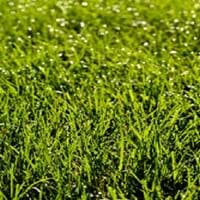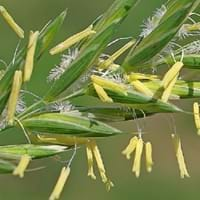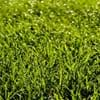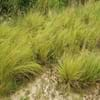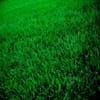Life Span
Perennial
Annual
Origin
Southern Asia, India
Not Available
Types
Not Available
Not Available
Number of Varieties
Not Available
Habitat
Warmer regions
Wet lands
USDA Hardiness Zone
6-11
Not Available
AHS Heat Zone
11- 6
Not Available
Sunset Zone
H1, H2, 5, 6, 7, 8, 9, 10, 12, 13, 14, 15, 16, 17, 18, 19, 20, 21, 22, 23, 24
Not Available
Habit
Mat-forming
Not Available
Minimum Height
Not Available
Minimum Width
Not Available
Flower Color
Not Available
Indigo
Flower Color Modifier
Bicolor
Bicolor
Fruit Color
Not Available
Brown
Leaf Color in Spring
Gray Green, Dark Green
Not Available
Leaf Color in Summer
Light Green
Light Green
Leaf Color in Fall
Gray Green, Dark Green
Not Available
Leaf Color in Winter
Gray Green, Dark Green, Tan
Not Available
Leaf Shape
Arrowhead
Grass like
Plant Season
Spring, Summer, Fall, Winter
Not Available
Sunlight
Full Sun
Full Sun, Partial Sun
Growth Rate
Fast
Not Available
Type of Soil
Clay, Loam, Sand
Moist
The pH of Soil
Acidic, Neutral, Alkaline
Acidic, Neutral, Alkaline
Soil Drainage
Well drained
Average
Bloom Time
Indeterminate
Not Available
Repeat Bloomer
Yes
Not Available
Tolerances
Pollution, Salt, Soil Compaction
Not Available
Where to Plant?
Container, Ground
Ground
How to Plant?
Seedlings
Seedlings
Plant Maintenance
Medium
Medium
Watering Requirements
Average Water Needs
Requires watering in the growing season
In Summer
Lots of watering
Lots of watering
In Spring
Moderate
Moderate
In Winter
Average Water
Average Water
Soil pH
Acidic, Neutral, Alkaline
Acidic, Neutral, Alkaline
Soil Type
Clay, Loam, Sand
Moist
Soil Drainage Capacity
Well drained
Average
Sun Exposure
Full Sun
Full Sun, Partial Sun
Pruning
No pruning needed
Remove damaged leaves, Remove dead branches, Remove dead leaves
Fertilizers
Apply 3-1-2 or 4-1-2 ratio, Nitrogen
All-Purpose Liquid Fertilizer
Pests and Diseases
Red blotch
Red blotch
Plant Tolerance
Pollution, Salt, Soil Compaction
Drought
Flowers
Insignificant
Not Available
Flower Petal Number
Single
Single
Edible Fruit
No
Not Available
Foliage Texture
Fine
Not Available
Foliage Sheen
Matte
Not Available
Invasive
Sometimes
Not Available
Attracts
Flying insects, Insects
Deers
Allergy
breathing problems, Eye irritation, Hives, Itchiness, Runny nose, sneezing, Throat itching, Whooping Cough
Not Available
Aesthetic Uses
Ground Cover, Landscape Designing
small hedge
Beauty Benefits
Skin irritation, Skin Problems
Not Available
Edible Uses
Insignificant
Yes
Environmental Uses
Air purification, Prevent Soil Erosion, soil stabilisation
Air purification
Medicinal Uses
Cures constipation, Cures foot fissures, Digestive disorders, Eliminate toxins, Fatigue, Halitosis, Improves Breast milk production, Increase red blood cells, Insomnia
Diuretic, Prevention of convulsion
Part of Plant Used
Leaves, Stem
Leaves
Other Uses
Animal Feed, Cattle Fodder, Used as Ornamental plant
Used as Biofuel
Used As Indoor Plant
Insignificant
No
Used As Outdoor Plant
Yes
Yes
Garden Design
Lawns and Turf
Not Available
Botanical Name
CYNODON dactylon
PANICUM
Common Name
Bermuda Grass
Panicum
In Hindi
बरमूडा घास
panikom
In German
Bermuda Gras
panikom
In French
l'herbe des Bermudes
panikom
In Portuguese
grama Bermuda
Panicum
In Polish
Trawa Bermuda
Panicum
In Latin
Bermuda Grass
Panicum
Phylum
Magnoliophyta
Magnoliophyta
Class
Liliopsida
Liliopsida
Genus
Cynodon Rich
Panicum
Clade
Angiosperms, Commelinids
Angiosperms, Commelinids, Monocots
Tribe
Chlorideae
Not Available
Subfamily
Chloridoideae
Panicoideae
Difference Between Bermuda Grass and Panicum
If you are confused whether Bermuda Grass or Panicum are same, here are some features about those plants to help you choose better. Many people think that these two plants have the same characteristics, but one can see Bermuda Grass and Panicum Information and learn more about it. Fertilizers required for proper growth of Bermuda Grass are Apply 3-1-2 or 4-1-2 ratio and Nitrogen, whereas for Panicum fertilizers required are All-Purpose Liquid Fertilizer. Hence, one should know the basic difference between Bermuda Grass and Panicum if you are planning to have them in your garden to enhance its beauty.
<
Flowering PlantsImportance of Bermuda Grass and Panicum
Want to have the most appropriate plant for your garden? You might want to know the importance of Bermuda Grass and Panicum. Basically, these two plants vary in many aspects. Compare Bermuda Grass and Panicum as they differ in many characteristics such as their life, care, benefits, facts, etc. Every gardener must at least have the slightest clue about the plants he wants to plant in his garden. Compare their benefits, which differ in many ways like facts and uses. The medicinal use of Bermuda Grass is Cures constipation, Cures foot fissures, Digestive disorders, Eliminate toxins, Fatigue, Halitosis, Improves Breast milk production, Increase red blood cells and Insomnia whereas of Panicum is Diuretic and Prevention of convulsion. Bermuda Grass has beauty benefits as follows: Skin irritation and Skin Problems while Panicum has beauty benefits as follows: Skin irritation and Skin Problems.
Compare Facts of Bermuda Grass vs Panicum
How to choose the best garden plant for your garden depending upon its facts? Here garden plant comparison will help you to solve this query. Compare the facts of Bermuda Grass vs Panicum and know which one to choose. As garden plants have benefits and other uses, allergy is also a major drawback of plants for some people. Allergic reactions of Bermuda Grass are breathing problems, Eye irritation, Hives, Itchiness, Runny nose, sneezing, Throat itching and Whooping Cough whereas of Panicum have Not Available respectively. Having a fruit bearing plant in your garden can be a plus point of your garden. Bermuda Grass has no showy fruits and Panicum has showy fruits. Also Bermuda Grass is not flowering and Panicum is not flowering . You can compare Bermuda Grass and Panicum facts and facts of other plants too.
